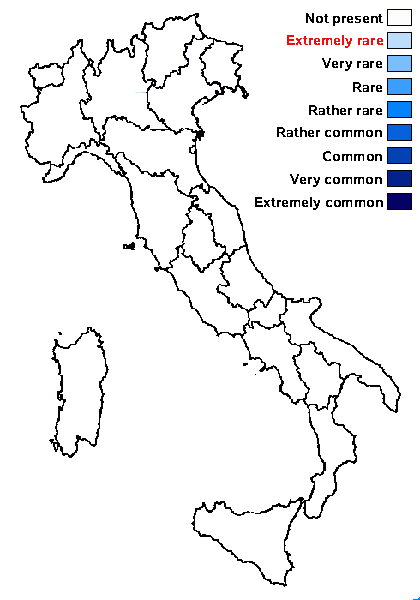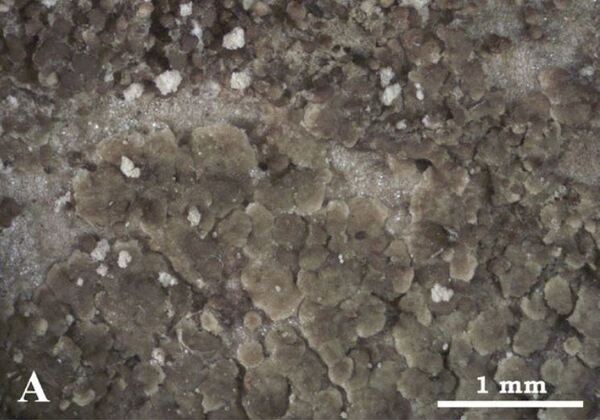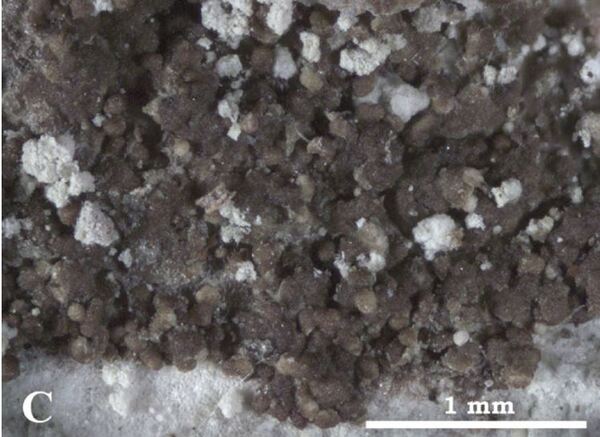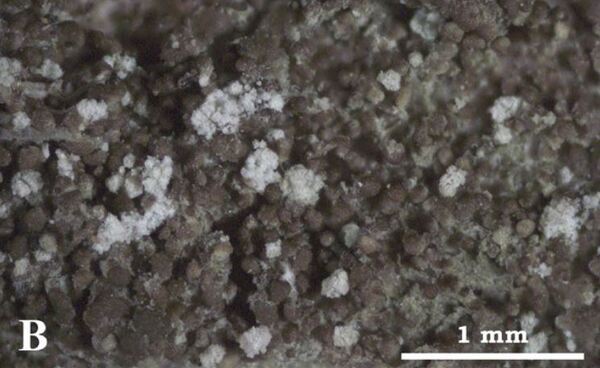Protoparmelia hypotremella Herk, Spier & V. Wirth
in Aptroot & al., Lichenologist, 29: 416, 1997.
Synonyms:
Distribution:
Description: Thallus crustose, pale grey-green to greenish brown, consisting of squamulose granules, paler along the margins of the granules/areoles, without discernible thallus below or around the granules, usually covering large surfaces. Granules convex, rounded to elongate or globose, c. 0.2 mm wide; microsquamules randomly occur amongst the granules, crenate to lobate, slightly concave to convex, up to 0.3(-0.6) mm wide, sometimes bearing dark-tipped isidia-like granules, the margins often eroding and less distinctly corticate, often whitish, paler than surface. Epicortex 5-10 µm thick, hyaline; cortex 15-25 µm thick, pale brown, paraplectenchymatous, the cell lumina c. 6-9 µm wide; medulla 60-150 µm thick, rather loose, I-. Apothecia very rare, lecanorine, up to 1 mm across, dark brown to dark yellowish brown, with a more or less flat disc and a distinct thalline margin. Asci 8-spored, clavate, approaching the Lecanora-type, with a well-developed amyloid tholus and a distinct, non-amyloid axial mass. Ascospores 1-celled, hyaline, usually poorly developed. Photobiont chlorococcoid. Spot tests: cortex and medulla K-, C- or C+ pale yellow, KC- or KC+ pink, P-, UV+ white; thallus sections do not release oily exudates in K. Chemistry: lobaric acid (major), and minor unknowns. Note: on bark and wood, both in forests and in rural landscapes; widespread in Europe from the lowlands to subalpine coniferous forests, but easily overlooked; known from several localities in the Alps, outside the Italian territory; to be looked for in Italy. For further details see Aptroot & al. (1997).
Growth form: Crustose
Substrata: bark
Photobiont: green algae other than Trentepohlia
Reproductive strategy: mainly sexual

Predictive model
Growth form: Crustose
Substrata: bark
Photobiont: green algae other than Trentepohlia
Reproductive strategy: mainly sexual

Predictive model
 INDEX FUNGORUM
INDEX FUNGORUM
 GBIF
GBIF




